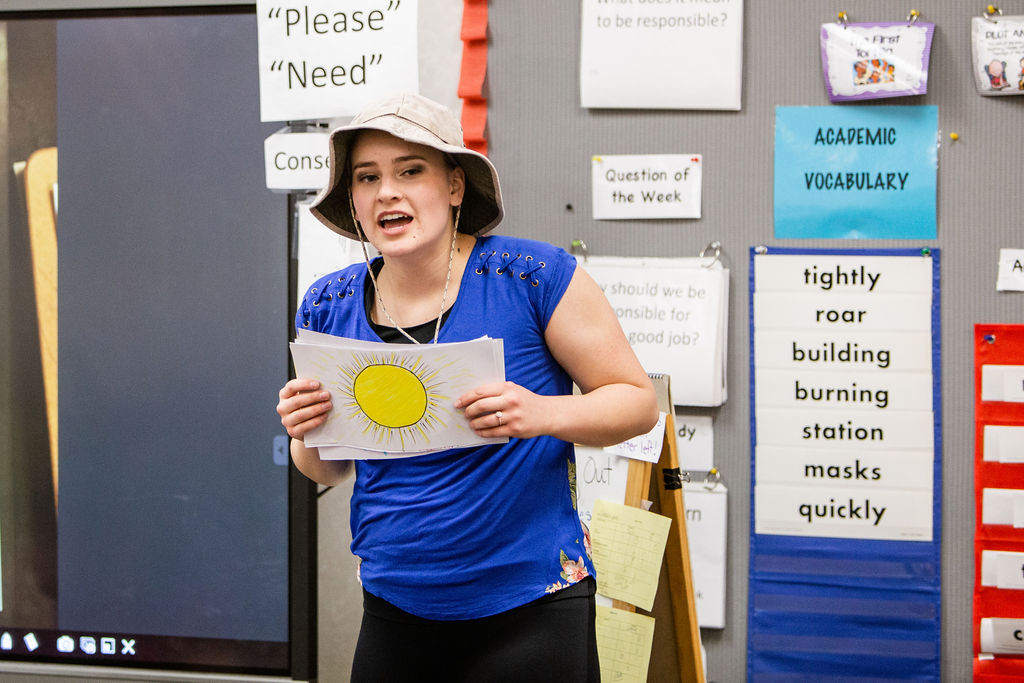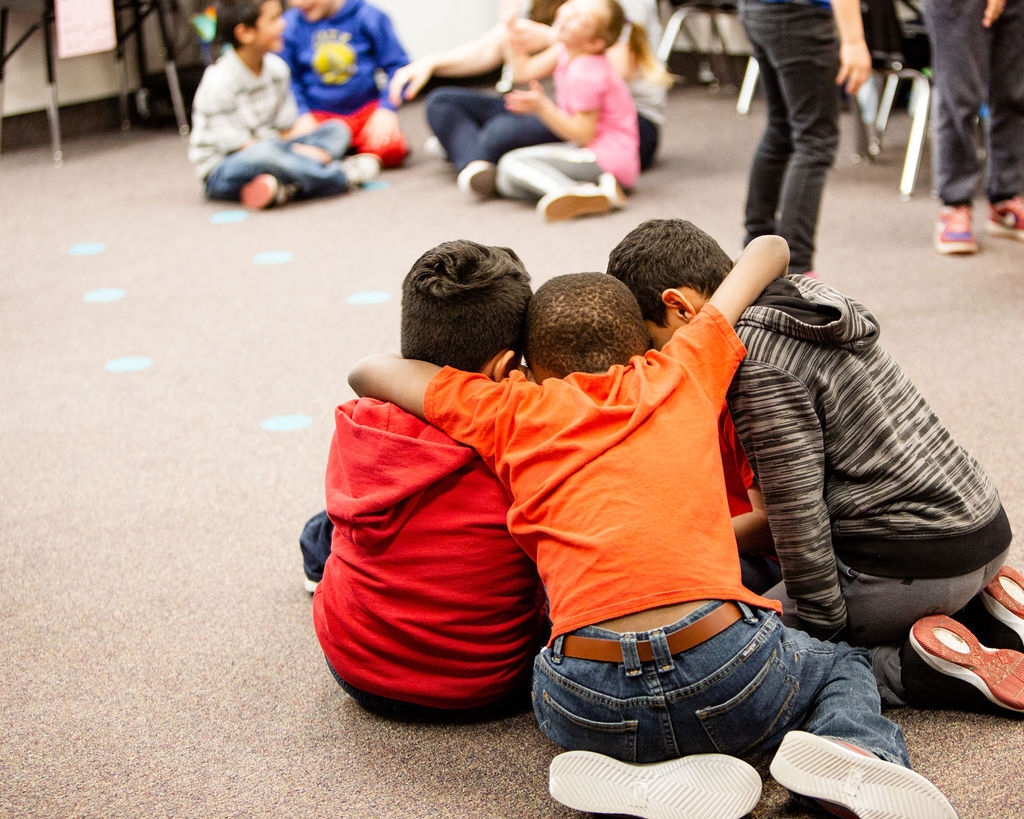Drama in the Elementary Classroom
What is Drama?
Drama is a multifaceted art form that has captivated audiences for centuries. It is a medium of storytelling and expression that combines various elements, including acting, staging, design, and writing, to create a compelling and immersive experience. Drama serves as a reflection of human life and society, exploring the depths of human emotion, conflict, and character development in a live performance. It reveals patterns in our lives, in our relationships, in our inner drive for personal growth, and in our learning journeys.
Drama, as an art form, transcends time and culture, continuing to evolve and adapt to contemporary sensibilities and technological advancements. It remains a powerful medium for examining the human condition, inspiring empathy, and sparking critical thinking and dialogue. Whether on the stage or screen, drama continues to be a dynamic and enduring expression of the human experience.
What is your personal background with drama and what is drama to you?
Why Drama in the Classroom?
In drama instruction, the teacher helps students not only understand the principles and skills of the art form but also recognize the processes, techniques, and conventions. These various elements often overlap and interact during creative drama experiences.
Drama in the classroom involves students using their bodies, voices, and minds to move, speak, and anticipate solutions in order to deepen learning. Drama provides students with an aesthetic opportunity to actively engage with other students, practice collaborative learning, use all the senses, and also role play real-life events that span all educational content areas. Other reasons to include movement in the classroom include the following:
- Provide a natural way for children to learn and explore
- Encourage dispositions for teamwork and collaboration
- Bring attention to the whole person, including physical, emotional, social, and intellectual aspects
- Develop imagination, creativity, and critical thinking
- Enhance the ability to express through movement, voice, design, and writing
- Boost confidence and build twenty-first century skills

What Do I Need to Know About Drama for Young Students?
Elements of Drama and Key Vocabulary
- Drama: A conflict, most often in story form, is identified, explored, and performed by actors
- Actors: People who portray characters by making creative choices using body, voice, and mind
- Ensemble: A group of actors
- Audience: Individuals viewing the drama, and who will make meaning from the drama
- Design and Technology: Design elements to be considered when creating a presentation for an audience include scripts, props, costumes, lighting, and sound
- Theatre: The art of producing and communicating drama for a non-exclusive, invited audience, theatre requires students to develop higher-level performance skills and can include normal plays, such as comedies, tragedies, polished and revised improvisation, and storytelling works, as well as musical theatre, circus, and vaudeville. Ideally suited for older students (upwards of fourth grade), theatre is primarily audience-centric, places the teacher as a director/producer, and includes a formal audience and performing space.
- Guided Classroom Drama: Guided classroom drama is designed to benefit students' own understanding of themselves, help them develop empathy for others, and encourage a deeper understanding of ideas and issues. Storytelling, creative drama, dramatic play, choral speaking, puppetry, process drama, pantomime, narrative mime, theatre games, mantle of the expert, improvisation, and teacher-in-role are examples of guided classroom drama activities. Guided classroom drama is easily integrated into other core curricula, is student-centric, incorporates the teacher as facilitator, and includes a non-formal audience and performing space.
- Playing Space: The physical space where the drama is enacted
- Rehearsal: The time actors, facilitators, and directors investigate, explore, practice, and polish drama work
- Side Coaching: A facilitator identifies students' needs and coaches in the moment of creation. The facilitator encourages creative stretching, choice-making, and skill development through questioning and suggestion through dramatic responses. Side coaching is also a function of formative assessment.
- Facilitator: A designer of drama learning, most often the classroom teacher, who encourages creative work through side-coaching
- Director: This person facilitates the actors' rehearsal work for theatre and coordinates other theatrical artists/workers
- Improvisation (Improv): Also called acting "on-the-spot," improvisation involves using creative intuition to address dramatic conflict
- Script: The script details the dialogue and directions used to guide the actors. Scripts can be created before actors begin or during actor exploration; scripts can be minimal or detailed; and scripts can result from an individual creation or group collaboration. A script might also be improvised.
- Theatre for Young Audiences (TYA): Theatre created and designed for child audiences, like the Utah-based Plan-B Theatre's educational productions, offers a prime example of theatre for young audiences. The stories, issues, design, performance style, and staging are designed to meet children's specific developmental, educational, and emotional needs. Professional, collegiate, and some amateur groups may tour such productions; most will provide teachers with core-integrated materials or other classroom enrichment.
Principles of Guided Classroom Drama
While theatre is audience-centric and focuses primarily on students developing higher-level performance, design, writing, and tech skills, guided classroom drama is designed to benefit students' understanding of themselves. It helps them develop a deeper understanding of ideas and issues and encourages empathy for others. Storytelling, dramatic play, choral speaking, puppetry, pantomime, narrative mime, theatre games, mantle of the expert, improvisation, and teacher-in-role are examples of drama-based activities.
Guided classroom drama is easily integrated into other core curricula, is student-centric, incorporates the teacher as facilitator, and includes a non-formal audience and performing space. It is an appropriate method of teaching and learning for all grade levels. The culminating outcomes of guided classroom drama might include understanding concepts in other content areas, following directions, demonstrating more confidence when taking creative risks, improving group collaboration, speaking clearly, or using flexible and unique thinking to solve problems. These outcomes can vary in effective drama classrooms and may or may not be intended to become a final performance for an invited audience.
Drama involves pretending, such as role-play and characterization
Guided classroom drama is most often recognized as pretending. It focuses on the use of an actor's tools: body, voice, and mind. Mind equals imagination and analysis, as well as creative problem-solving. Pretending is fostered by open-ended questions with unlimited answers.
Drama emphasizes the importance of relationships
Often using design, sound, and movement to convey ideas, drama emphasizes the importance of relationships, can be communicated through speech and movement (sometimes using a script), and is expressed through an actor's body, voice, and mind. Guided classroom drama is focused on communicating content, including specific curricular content or more abstract ideas like emotion and empathy. Participating individuals and audience members will see, hear, understand, and feel the meaning of what learners and/or performers are expressing. In dramatic performance, showing is more powerful than telling. Ideas can be expressed through scenery, costumes, music, dance, blocking, stage business, puppetry, light, color, texture, mood, and energy.
Drama is collaborative and encourages problem solving by highlighting conflict
The facilitating teacher of a drama-based activity helps learners identify the main dramatic conflict, and then guides learners in finding ways to resolve the conflict. Conflict can range from humorous to serious, and be internal or external to characters. While tension may be uncomfortable, guided classroom drama capitalizes on conflict as an opportunity to practice resilience and problem solving in low stakes and lifelike situations.

How Do I Implement Drama in the Classroom?
Drama Warm-Up Classroom Activities
Using drama in the classroom to reinforce core concepts, introduce new ideas, or as a transition activity requires students to have adequate skills in the art form. One way to develop these skills is to practice drama warm-ups.
Essential for tuning awareness and personal temperament, the warm-up exercises explained in the “Getting Ready for Drama Work” blog post allow students to easily call upon their voices, bodies, and imaginations to produce better-quality drama work. (This preparatory step is as important to a theatre artist as it is to a musician, dancer, or an athlete.)
Click here to read "Getting Ready for Drama Work"
Designing a Guided Classroom Drama Experience
There are many different ways to learn about drama in a structured manner. The elements discussed here are just one way to organize drama activities in the classroom. The method described in the blog linked below uses storytelling, conflicts, and characters as a central part of the learning experience.
Click here to read "Designing Drama Learning Experiences for the Classroom"
Red-Hot Guided Classroom Drama Tools
Using the 21 red-hot guided classroom drama tools with the elements described in this scaffold can provide students with more in-depth drama explorations.
Click here for the red-hot guided classroom drama tools, or find them in our Arts Toolbox.
*Credit to Patrice Baldwin for compiling this list of tools, and thanks to Karla Huntsman for leading our implementation of these tools.
Additional Resources
- Arts Toolbox: This ebook includes 16 drama activities and video links for the classroom
- Arts Playbook: This ebook includes drama activities that support learning readiness and child development
- Actor’s Tools
- Assessment in Drama
- Drama Lesson Plans: Find lesson plans integrating drama with literacy, science, math, and social studies
- Drama Blogs: Find more blogs focused on drama on our website